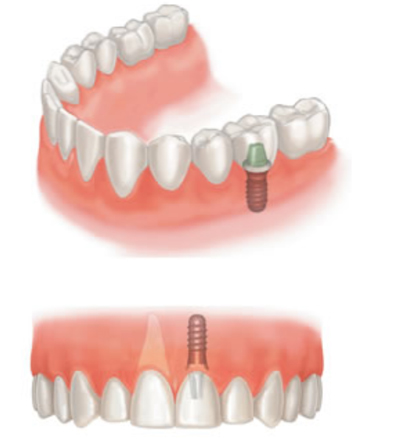
Dental Implants
Implants are now commonly used to replace missing teeth and there have been many studies showing very high success rates of 90-95%.
Over thirty years ago Professor Per-Ingvar Brånemark discovered the process of osseointegration which describes the process a titanium implant goes through when it is placed in the jawbone. After healing the implant becomes surrounded by live healthy bone and as it is completely rigid it can be used to support teeth.
Implants can be used to replace a single tooth or a full set of teeth. Adequate bone must be available into which implants can be placed and this can be assessed by examination or using X-Rays.

In order to replace a single tooth you will need one implant, but you will not need an implant for each tooth. For example three teeth could be placed on two implants or a full lower set of twelve teeth will need four implants or a full set of twelve upper teeth will need six implants.
They do not affect other teeth in the way that removable dentures do and no damage is done to adjacent teeth as is the case when fixed bridges are constructed.
Although most implants are left for a while, to allow for osseointegration, before teeth are constructed more recent developments have allowed us to attach teeth at the same time as the implants are placed, this is termed immediate loading.
![]()
NHS Clinics
Monday to Friday
Morning Session: 8:30am to 12:30pm
Afternoon Session: 2:00pm to 5:15pm

